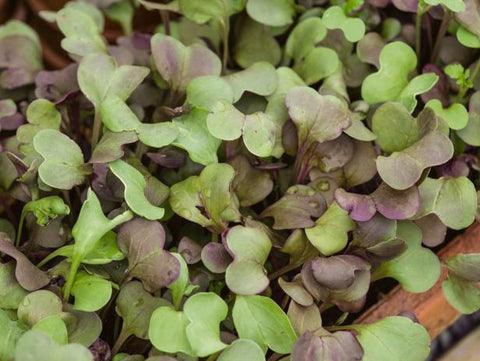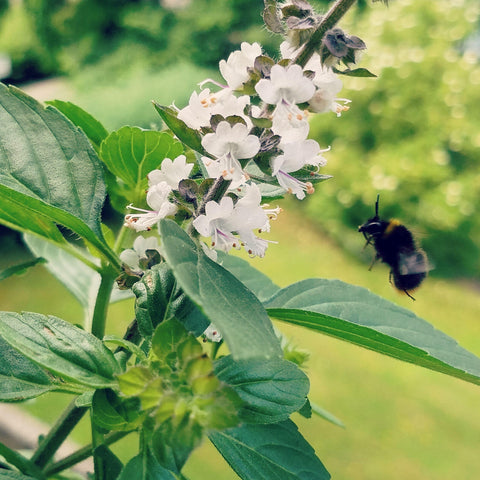In the intricate tapestry of nature, microclimates are like hidden gems waiting to be discovered. These miniature ecosystems within larger environments often go unnoticed but play a crucial role in shaping the diversity of life around us. From the warmth of a sun-soaked corner to the coolness of a shaded alcove, understanding microclimates unlocks a deeper appreciation for the dynamic interplay of environmental factors. Join us as we embark on a journey to unravel the mysteries of microclimates and learn how to harness their power in our own gardens.

What are Microclimates?
At its essence, a microclimate refers to the climate of a small, localized area that differs from the surrounding larger area. While macroclimates define broad regional weather patterns, microclimates zoom in on the nuances within these regions. Think of it as nature's fingerprint, unique and distinct, shaped by a myriad of factors ranging from topography to vegetation cover.
Defining Microclimates and Macro Influences:
To understand microclimates, it's essential to grasp the macro influences that shape them. Factors such as latitude, altitude, proximity to water bodies, and prevailing wind patterns lay the foundation upon which microclimates are built. For instance, coastal areas may experience milder temperatures due to the moderating effect of the ocean, while mountainous regions might exhibit drastic temperature changes with elevation.
Exploring the Factors That Shape Microclimate Variation:
Microclimates are dynamic entities shaped by a delicate interplay of factors. Sunlight exposure, elevation, slope orientation, and proximity to buildings or vegetation all contribute to microclimate variation. South-facing slopes bask in the sun's warmth, while north-facing slopes remain cooler and shaded. Similarly, urban areas retain heat, creating urban heat islands that contrast with the cooler outskirts.
The Power of Location: Identifying Microclimates in Your Garden:
Gardens are fertile grounds for exploring microclimates, offering a canvas to observe nature's nuances up close. Start by observing how sunlight filters through your garden at different times of the day. Notice areas that receive full sun, partial shade, or deep shade. Pay attention to temperature variations and airflow patterns, noting where pockets of warmth or coolness linger. These observations lay the groundwork for harnessing microclimates to optimize plant growth and diversity.
Mapping Your Garden's Microclimates:
Armed with keen observation skills, embark on the task of mapping your garden's microclimates. Create a simple sketch or use digital tools to delineate areas of sun exposure, shade, and temperature variation. Note the presence of structures, trees, or other elements that may influence microclimate formation. Over time, refine your map based on seasonal changes and plant responses, honing your understanding of your garden's unique microcosm. Every garden holds within it a world of microclimates, each with its own unique characteristics that can significantly impact the growth and health of your plants. Understanding these microclimates is like unlocking the hidden secrets of your garden, empowering you to make informed decisions about what to plant where and how to optimize your garden space.
Observation is Key:
The first step in mapping your garden's microclimates is to become a keen observer of your garden space. Spend time studying how sunlight moves across your garden throughout the day, paying attention to areas of direct sunlight, partial shade, and full shade. Note any obstacles such as buildings, fences, or trees that may cast shadows and influence the distribution of sunlight.
Sketching Your Garden:
Armed with your newfound observation skills, take a pen and paper or utilize digital tools to sketch out a rough map of your garden. Begin by outlining the perimeter of your garden space and then delineate areas of sun exposure, shade, and temperature variation. Be sure to include any existing structures, trees, or other elements that may impact microclimate formation.
Mapping Sun Exposure:
Identify which areas of your garden receive the most sunlight and which areas remain shaded throughout the day. Note the orientation of your garden in relation to the sun and how this affects the intensity and duration of sunlight in different areas. Keep in mind that sun exposure can change throughout the day and throughout the seasons, so be prepared to update your map accordingly.
Noting Temperature Variations:
In addition to sunlight, temperature variations also play a crucial role in defining microclimates within your garden. Observe how temperature fluctuates across different areas, noting any pockets of warmth or coolness. Factors such as proximity to buildings or bodies of water can influence temperature variations, so be sure to take these into account when mapping your garden.
Seasonal Changes and Plant Responses:
As you continue to observe and interact with your garden, pay attention to how microclimates shift with the seasons and how your plants respond to these changes. Certain plants may thrive in specific microclimates while struggling in others, providing valuable insight into which areas of your garden are best suited for different types of plants.
Refining Your Map:
Mapping your garden's microclimates is an ongoing process that requires patience and persistence. As you gain more experience and gather more data, take the time to refine your map, updating it to reflect any changes or discoveries you make along the way. By continuously honing your understanding of your garden's unique microcosm, you'll be better equipped to create a harmonious and flourishing garden environment.

Recognizing Microclimate Patterns:
As you delve deeper into the realm of microclimates, patterns will emerge, unveiling nature's secrets hidden in plain sight. You may discover sheltered alcoves where tender plants thrive, or sun-drenched spots perfect for cultivating heat-loving crops. By recognizing these patterns, you can tailor your gardening practices to suit each microclimate, maximizing yield and beauty while minimizing resource inputs.
Designing Your Garden for Microclimate Success
Before digging into the dirt, take stock of your garden's topography, orientation to the sun, and existing features like buildings, trees, or water bodies. These elements influence how temperature, sunlight, and moisture behave in different areas of your garden.
Strategic Plant Placement
Now armed with insights into your garden's microclimates, strategically place your plants accordingly. Heat-loving crops like tomatoes and peppers thrive in warmer microclimates, while shade-tolerant varieties such as leafy greens and herbs flourish in cooler, shadier spots. By matching plant needs with microclimate conditions, you're setting the stage for optimal growth and productivity.
Creating Microclimate Diversity
Variety isn’t just the spice of life – it’s also the secret sauce in microclimate gardening. Introduce diverse elements like trellises, raised beds, and water features to create pockets of varying microclimates within your garden. This not only maximizes space utilization but also provides habitats for a wider range of plant species, promoting biodiversity and resilience.
Long-term Planning: Anticipating Future Changes
Nature is dynamic, and so too are microclimates. As seasons shift and landscapes evolve, anticipate how your garden's microclimates might change over time. Consider factors like tree growth, building renovations, or climate patterns to adapt your garden design accordingly. Flexibility is key to staying ahead of the curve and ensuring continued success in your gardening endeavors.
Sustainable Practices for Microclimate Stewardship
As stewards of our gardens, it’s our responsibility to nurture and preserve the delicate balance of microclimates. Embrace sustainable practices like mulching, composting, and rainwater harvesting to conserve resources and minimize environmental impact. By working in harmony with nature, we not only enhance microclimate resilience but also contribute to the broader goal of ecological sustainability.

Flexibility in Garden Design for Adaptation
In the ever-changing landscape of gardening, adaptability reigns supreme. Don’t be afraid to experiment with different plant combinations, structures, and techniques to optimize your garden's microclimates. Stay attuned to feedback from your plants and be prepared to tweak your design as needed. After all, gardening is as much about learning from failures as it is about celebrating successes.
In the journey of understanding microclimates, we've uncovered the intricate dance of environmental factors that shape these hidden pockets of nature. From the gentle influence of sunlight to the subtle sway of topography, each element plays a crucial role in crafting the unique microcosms around us. As we've explored the nuances of microclimates in our gardens, we've learned to see beyond the surface and embrace the diversity of life that thrives within these small-scale ecosystems.
Mapping our garden's microclimates has empowered us to make strategic decisions, from plant placement to creating diverse habitats. By harnessing the power of microclimates, we've not only optimized our gardens for growth and productivity but also fostered resilience and biodiversity. Yet, as stewards of these delicate balances, our journey doesn't end here.
In traversing the intricate landscapes of microclimates, we've embarked on a voyage of revelation and responsibility. From the intricacies of sunlight to the subtleties of terrain, each facet has woven a tapestry of understanding around these concealed realms of nature. As we've ventured through the nuances of microclimates within our gardens, we've learned to perceive beyond the superficial and embrace the richness of life flourishing within these miniature ecosystems.
The act of mapping our garden's microclimates has bestowed upon us the power of informed decision-making, guiding us in strategic endeavors from plant positioning to fostering diverse habitats. Through harnessing the potency of microclimates, we've not only optimized our gardens for vitality and yield but also nurtured resilience and biodiversity. However, as custodians of these delicate balances, our odyssey doesn't conclude here.
Gazing forward, we acknowledge the imperative for perpetual adaptation and guardianship. Nature is in perpetual flux, and our gardens must evolve in tandem. By embracing sustainable methodologies and an ethos of adaptability, we can perpetuate the cultivation of our microclimates while mitigating our ecological footprint.
In summary, navigating the recesses of nature's enclaves and deciphering the enigmas of microclimates constitutes a pilgrimage of revelation and custodianship. It beckons us to heed, observe, and accommodate as we cultivate not merely gardens, but flourishing ecosystems in miniature.









